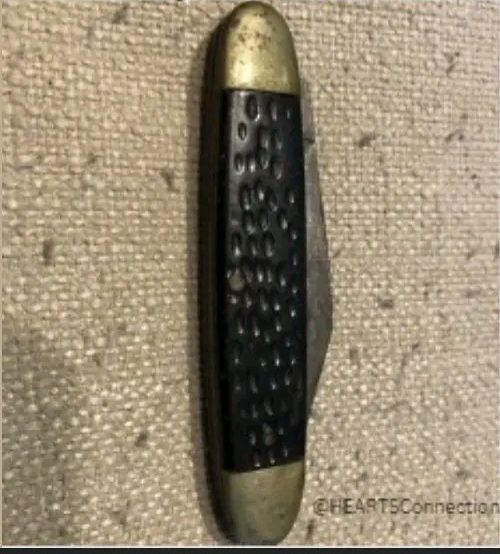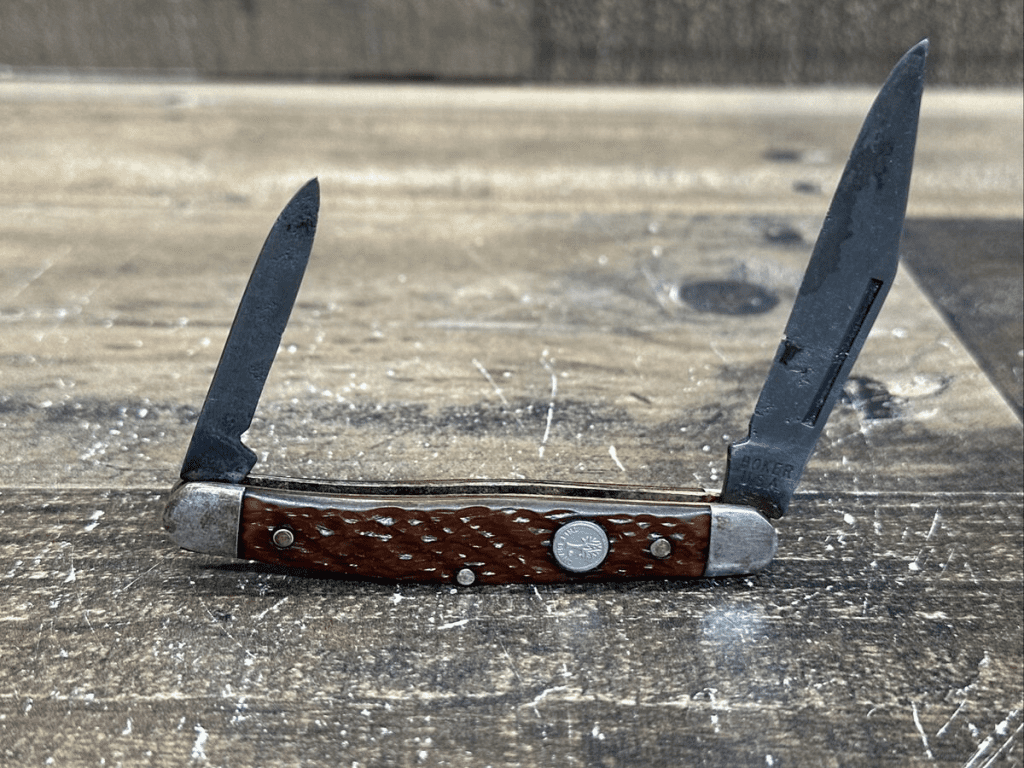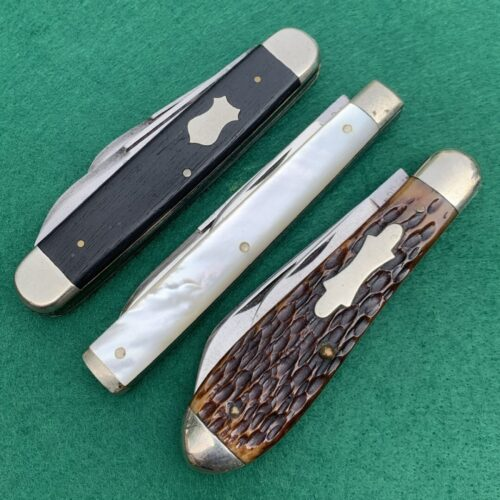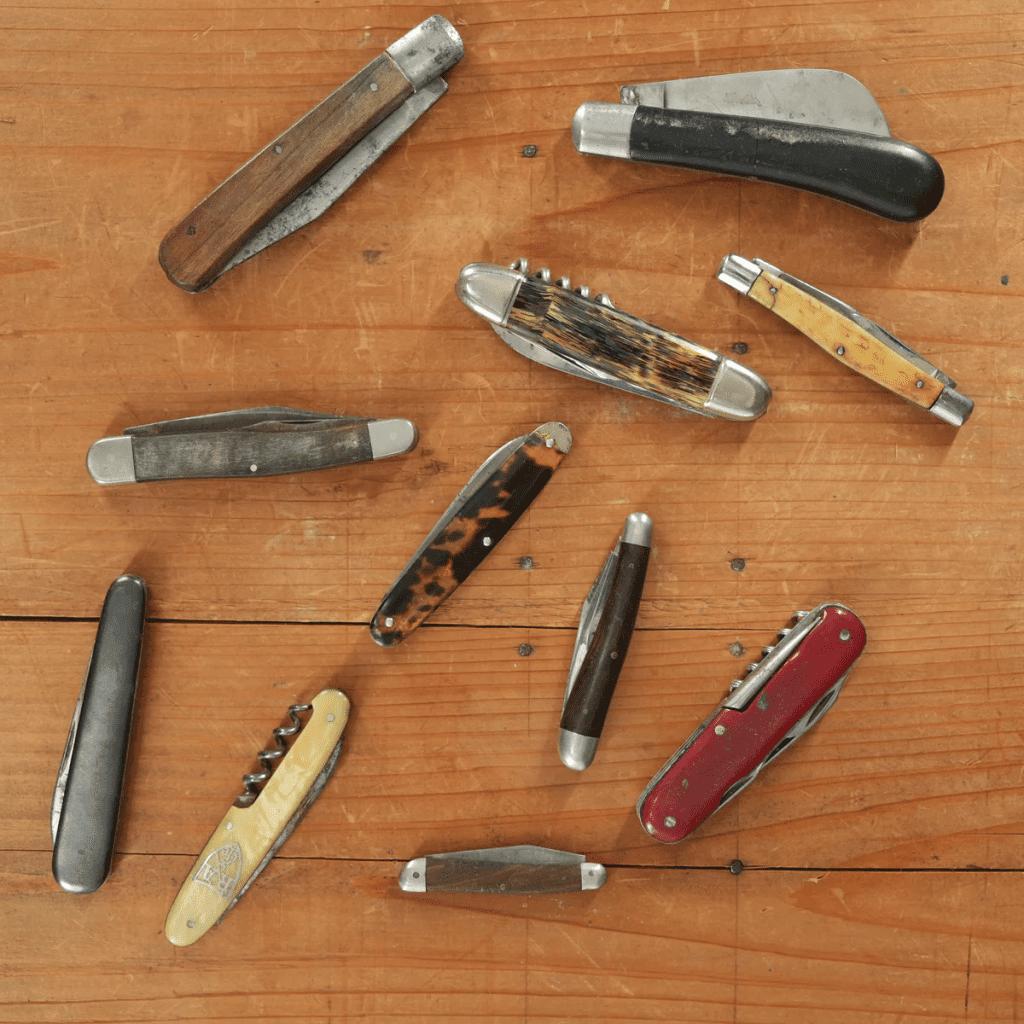Once a daily essential, the pen knife—better known today as a pocket knife—was a staple for generations. Carried by craftsmen, students, and even businessmen, this small yet mighty tool was a symbol of preparedness. From sharpening quills to slicing fruit, the pen knife served countless practical purposes.
But as times changed, so did our tools. Today, the once-common pen knife has nearly vanished from everyday life, replaced by modern conveniences. So, what’s the story behind this timeless classic? Let’s take a trip through history and rediscover the lost legacy of the pen knife.

The Origins of the Pen Knife: A Tool for Writers and Workers
The pen knife gets its name from its original use—sharpening quill pens. Before the invention of fountain pens and ballpoints, people wrote with quills, which needed frequent trimming to maintain a fine writing tip.
Early Development
- The first folding knives date back to ancient Rome, but the pen knife, as we recognize it, became popular in the 17th and 18th centuries.
- These small, sharp blades were compact, lightweight, and easy to carry, making them a favorite among scholars and clerks.
- As literacy spread and the need for writing tools grew, the pen knife became a standard accessory for anyone who used a quill.
Though its primary purpose was maintaining quills, people soon realized its usefulness extended far beyond writing.
The Golden Age: A Pocket Knife for Every Purpose
By the 19th and early 20th centuries, the pen knife had evolved into an all-purpose pocket knife, widely used by workers, farmers, and tradesmen.
Why Was the Pen Knife So Popular?
✔️ Compact and Portable – Small enough to fit in a pocket, yet strong enough for various tasks.
✔️ Versatile Uses – Used for cutting string, whittling wood, slicing fruit, and even small repairs.
✔️ A Symbol of Preparedness – Many men carried one daily, ready for whatever task came their way.
During this time, knife-making companies flourished, producing high-quality pen knives with durable materials. Brands like Case, Barlow, and Sheffield became household names.
In America, the pen knife became a rite of passage—many boys received one as a first tool, a symbol of growing independence and responsibility.

A Decline in Everyday Use: What Happened to the Pen Knife?
By the mid-to-late 20th century, the use of pen knives began to fade. Several key factors contributed to their decline.
1. The Decline of Quills and Traditional Writing
With the introduction of fountain pens and later, ballpoint pens, there was no longer a need to sharpen writing instruments. The original purpose of the pen knife became obsolete.
2. The Rise of Safety Concerns and Regulations
As society changed, so did attitudes toward carrying knives in public.
- Increased security laws in airports, schools, and workplaces restricted knife-carrying.
- The perception of knives as weapons rather than tools led to bans in many public spaces.
- Many young people simply stopped carrying pocket knives, as they were no longer considered everyday essentials.
3. The Invention of Modern Tools
New tools replaced the multi-use functions of a pen knife:
🔹 Box cutters replaced pocket knives for cutting.
🔹 Keychain tools and multitools (like Swiss Army knives and Leatherman tools) became more popular.
🔹 Utility knives became the preferred choice for craftsmen and workers.
As life became more fast-paced and technology-driven, the once-essential pen knife was left behind.

The Pen Knife as a Collector’s Treasure
Though it has vanished from most pockets, the pen knife is still cherished by collectors and enthusiasts.
What Makes a Pen Knife Valuable?
🔹 Age and Rarity – Antique models from the 18th and 19th centuries are prized finds.
🔹 Quality Craftsmanship – Handmade knives with intricate detailing hold high value.
🔹 Brand and Origin – Knives from legendary makers like Sheffield (UK) and Case (USA) are sought after.
Many vintage pen knives are now displayed in museums, knife shows, and private collections, preserving their legacy for future generations.
A Small Comeback: Is the Pen Knife Still Used Today?
Though rare, the pen knife hasn’t disappeared completely. In rural areas, outdoor activities, and certain professions, people still appreciate its practicality.
Where You Might Still See Pen Knives in Use
✔️ Camping and Outdoor Activities – Hikers, survivalists, and hunters carry small folding knives for utility purposes.
✔️ Craftsmen and Woodworkers – Some still use traditional pen knives for fine detailing and carving.
✔️ Custom and Handmade Knives – Modern artisans craft pen knives as luxury accessories for collectors.
While modern tools have taken over, there’s something undeniably charming about the simplicity and history of the pen knife.

Final Thoughts
The pen knife is more than just a tool—it’s a symbol of craftsmanship, independence, and everyday preparedness. Once an essential part of life, it has faded into history, replaced by newer technologies and changing societal norms.
But for those who remember its versatility and reliability, the pen knife remains a timeless classic. Whether tucked away in an antique collection or carefully carried by enthusiasts, this small yet powerful tool continues to hold a special place in history.
So, if you still have a pen knife in your drawer, congratulations—you’re officially vintage! 🎩